“For over 75 years, Environmental Health Officers (EHOs) have proudly served in the United States Public Health Service (USPHS) to protect and advance the Nation’s health. USPHS EHOs have a distinguished history of serving the public health needs of all Americans.” -RDML Kelly Taylor
The EHO category in the United States Public Health Service (USPHS) Commissioned Corps can trace its origins to the early 1940s. President Franklin D. Roosevelt’s New Deal and the U.S. response to World War II created many new federal programs for the USPHS Commissioned Corps including “programs for malaria and typhus control, sanitation, and the control of venereal diseases; industrial hygiene services for factory workers; community health programs for draft-age men; a heavily increased load of beneficiaries to treat in the network of [United States Public Health Service] PHS hospitals and clinics” (Snyder, 1994, p. 721).
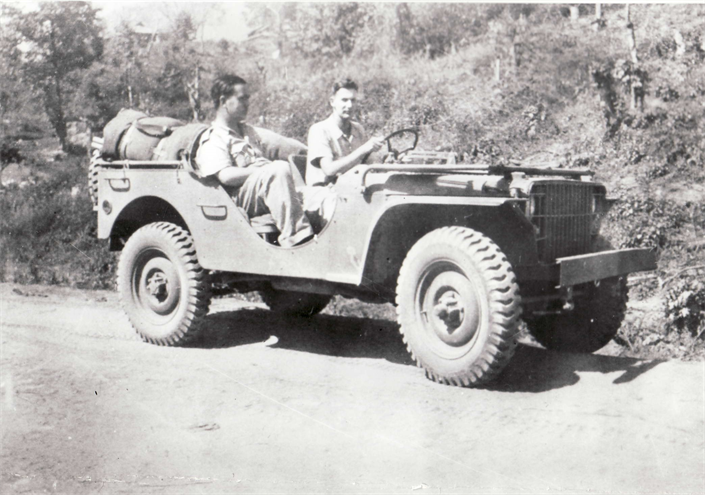 Figure 1. Sanitary Engineer Lawrence B. Hall and Sanitarian Frank W. Fisk (driving)
Figure 1. Sanitary Engineer Lawrence B. Hall and Sanitarian Frank W. Fisk (driving)
in a jeep on the Burma Road, 1942.
Two major, foundational pieces of legislation were passed to organize these new programs and modernize the U.S. Public Health Service. The Public Health Service Act of 1943 (Public Law 78-184) and the Public Health Service Act of 1944 (Public Law 78- 410) authorized the USPHS Commissioned Corps to commission additional professions including sanitarians. The first sanitarians, CAPTs Louis J. Ogden, Robert D. Murrill, and John C. Eason Jr. were called to active duty in 1943, the latter being the first African American USPHS Commissioned Corps officer.
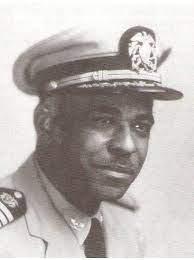 Figure 2. CAPT John Eason, one of the first Sanitarians and
Figure 2. CAPT John Eason, one of the first Sanitarians and
the first African American USPHS Commissioned Corps officer.
Assignments for these and eventually other new sanitarians included:
- Malaria control activities near military training bases in the southern U.S.
- United Nations Relief and Rehabilitation Agency in North Africa and Greece
- Malaria control activities in Turkey as part of the Marshall Plan
- Environmental health services (water purification, sewage disposal, food sanitation, insect, and rodent control, etc.) for housing projects for the Federal Public Housing Authority (a wartime agency)
The Sanitarian category was officially established in 1948. It included officers in professions that are now divided between the Health Services Officer and the EHO categories.
The 1950s brought about additional change for officers in the Sanitarian category. Changes in duty stations and agency assignments continued to evolve. For the first time, sanitarians were stationed with the Agency for International Development where they served abroad in malaria control and water supply programs. The biggest change came in 1952 when officers not traditionally recognized as sanitarians were removed from the category.
 Figure 3. A Sanitarian inspects grain storage, 1950.
Figure 3. A Sanitarian inspects grain storage, 1950.
Food safety and pest control are foundational disciplines for the category.
Until this time, the Sanitarian category served as a “catch-all” category of officers of a variety of professions and educational backgrounds. The Health Services category was established in 1958, giving a home to many of the non-sanitarians. The removal of the other professions from the Sanitarian category resulted in a much smaller cadre in the category. Most of those who remained were stationed in the Communicable Disease Center (CDC, now named the Centers for Disease Control and Prevention) and the USPHS Division of Environmental Health.
In 1959, the Indian Sanitation Facilities Construction Act (Public Law 86-121) was passed which authorized the USPHS to construct water supply, sewage disposal, and solid waste disposal facilities for American Indian and Alaska Native homes and communities. Funding provided by the law enabled the Indian Health Service (IHS) to hire USPHS Commissioned Corps sanitarians.
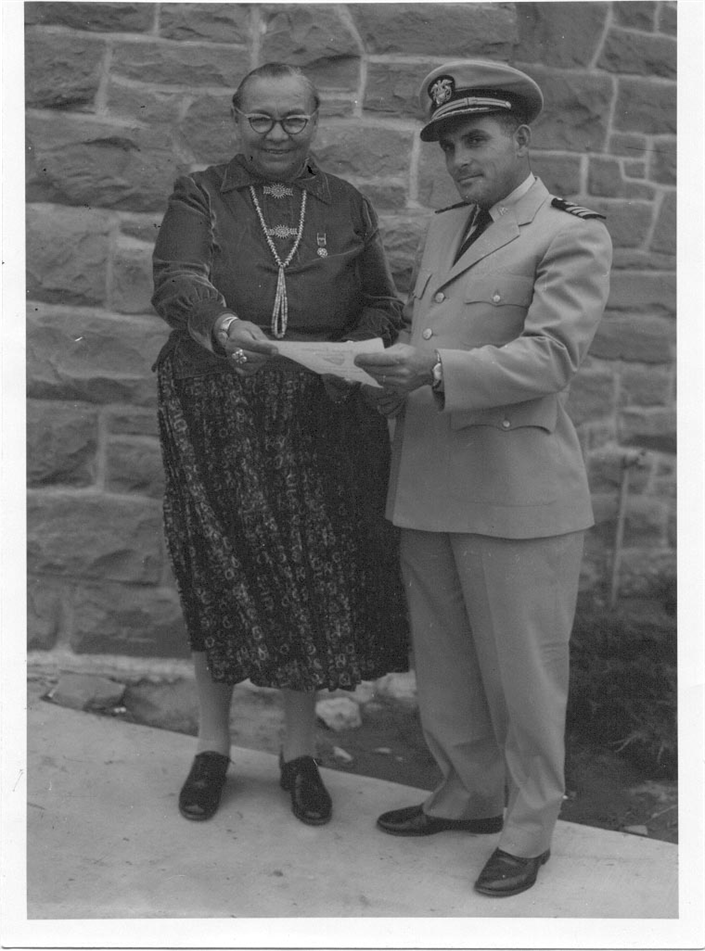 Figure 4. RADM John Todd, 2nd Sanitarian Chief Professional Officer, with Dr. Annie Wauneka,
Figure 4. RADM John Todd, 2nd Sanitarian Chief Professional Officer, with Dr. Annie Wauneka,
Three Term Chair of the Navajo Nation Council Health and Wellness Committee in Winslow, AZ in 1963.
In the 1960s, educational and professional development became an important focus for the category. Sanitarians, internal and external to the USPHS Commissioned Corps, developed a sample curriculum that would prepare an individual to work in the environmental health field. This provided the impetus for the later formation of the Environmental Health Accreditation Council (EHAC) whose function was to accredit environmental health curriculum at colleges and universities.
The year 1966 saw the release of the initial CDC home study courses in environmental health by C. Bradley Bridges and the creation of the American Intersociety Academy for the Certification of Sanitarians, of which several USPHS Commissioned Corps sanitarians were founders. In 1968, a residency program was developed at the USPHS hospital in New Orleans, together with Tulane University, to train sanitarians as institutional control officers. CAPT H. Harold Lehman was the first sanitarian to complete this residency.
By the late 1960s, the environmental movement had increased the demand for sanitarians. As a direct result, more undergraduate environmental health (EH) programs were established. The appointment standards for USPHS Commissioned Corps Sanitarians were changed so that a Master’s in Public Health (MPH) was no longer required for commissioning. The demand for sanitarians also prompted the Department of Health, Education, and Welfare (HEW), the predecessor of the Department of Health and Human Services (HHS), to offer scholarships to sanitarian students with a payback obligation in USPHS Commissioned Corps.
In 1967, by executive order, President Lyndon B. Johnson ordered the reorganization of the USPHS Commissioned Corps without the oversight of Congress. The Surgeon General was placed under the Assistant Secretary of Health, a newly created political appointee position. Over the next two years, the USPHS Commissioned Corps went through multiple reorganizations. For example, sanitarians responsible for food safety and inspections were moved from the USPHS Division of Environmental Health to the U.S. Food and Drug Administration (FDA).
 Figure 5. A Sanitarian tests water quality for chlorine residual, 1987.
Figure 5. A Sanitarian tests water quality for chlorine residual, 1987.
By the 1980s, the Sanitarian category had expanded to people with expertise in industrial hygiene, occupational health, and radiation/health physics. Agency assignments had grown to include agencies such as the Agency for Toxic Substances and Disease Registry (ATSDR), which had been created by the Superfund Act in 1980, and CAPT Richard Driscoll became the first sanitarian to be accepted to the Epidemiological Investigative Service of CDC. Sanitarians were also assisting in emergency situations both domestically and abroad which included the Teton dam collapse in Idaho, Cuban-Haitian refugee influx, and Sudan floods.
In 1997, the Sanitarian category appointment standards were changed again such that four career tracks were created: general EH, Industrial Hygiene, Occupational Health and Safety, and Health Physics. On October 1, 1999, the name of the Sanitarian category officially changed to the EHO category to better represent the growing and diverse nature of the category.
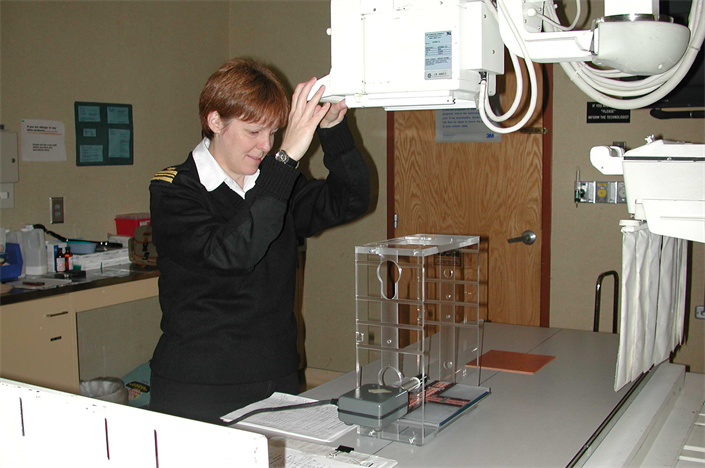 Figure 6. EHO LCDR Kit Grosch conducting a radiological survey at an IHS hospital, 2001.
Figure 6. EHO LCDR Kit Grosch conducting a radiological survey at an IHS hospital, 2001.
During the 2000s, EHOs were deployed with an increased frequency in federal responses to environmental threats that result from natural and man-made disasters. The attacks on September 11, 2001, resulted in significant environmental health risks to first responders and EHOs supported efforts on 9/11 to monitor and prevent exposures ranging from particulate matter to hazardous waste. Then, the Department of Homeland Security was created in the wake of September 11th, and EHOs took assignments in the new Department, as well with the new Office of the Assistant Secretary for Preparedness and Response within HHS.
 Figure 7. EHO LTJG Kristen Mitchell conducts a sound level survey onboard a
Figure 7. EHO LTJG Kristen Mitchell conducts a sound level survey onboard a
US Coast Guard Cutter, 2000. EHOs assigned to USCG,
within the Department of Homeland Security, wear USCG uniforms with USPHS devices.
During Hurricanes Katrina, Wilma, and Rita in 2005, two-thirds of on duty EHOs were deployed to support immediate safety and long-term recovery efforts. In response to these high-demand hurricane responses, the USPHS Commissioned Corps formed deployment teams to fulfill various response roles, including Rapid Deployment Teams (RDFs), Applied Public Health Teams (APHTs), and National Incident Support Teams (NISTs). While the team structure was used, several EHOs were appointed to critical leadership roles on these fast-response teams. In 2009 alone, CAPT Wendy Fanaselle was Team Leader for RDF 1, CAPT Calvin Edwards was Team Leader for RDF 2, CAPT Paul Young was Team Leader for NIST E, and CAPT Joe Maloney was Team Leader for APHT 5. Other high-profile assignments in recent years included CAPT Cindy Kunkel as Team Leader for RDF 5 and CAPT Jessica Havranek as Team Leader for NIST B.
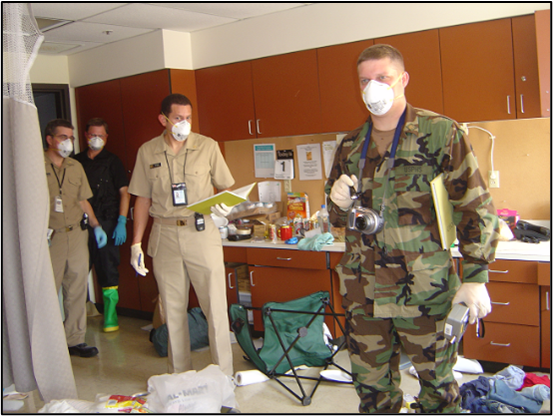 Figure 8. LCDR Steve Martin, LT Brad King, and LCDR Kevin Hanley perform an industrial hygiene
Figure 8. LCDR Steve Martin, LT Brad King, and LCDR Kevin Hanley perform an industrial hygiene
evaluation of a facility in New Orleans after Hurricane Katrina.
The 2013-2015 Ebola outbreak in West Africa prompted significant response efforts across the USPHS Commissioned Corps. EHOs from many response teams helped stand-up and staff medical units domestically and internationally which tested and treated hundreds of individuals. EHOs served in critical leadership roles. For example, CAPT Calvin Edwards served as Team Leader for the first USPHS Commissioned Corps deployment to Liberia.
 Figure 9. EHO LCDR Daniel Adams inspects PPE in the Monrovian Medical Unit
Figure 9. EHO LCDR Daniel Adams inspects PPE in the Monrovian Medical Unit
during the Ebola Outbreak in Liberia.
The COVID-19 pandemic reminded us that EHOs are still relevant and necessary for foundational public health. The focus on respirator fit testing, disinfection, and ventilation demonstrated the importance of environmental health strategies to reduce airborne disease transmission. The category saw over 230 EHO deployments between 2020-2021 for COVID-19 response alone, on top of nearly 100 deployments for other missions like those for unaccompanied migrant children support. In the majority (over 160) of these deployments, EHOs filled critical roles as Safety Officers for mobile medical units, intake facilities, testing/vaccination sites, and incident management teams. Sometimes deploying for 100+ days or back-to-back assignments, EHOs protected the USPHS deployable force of healthcare and allied health responders.
Today, a committed cadre of approximately 350 EHOs are assigned to a variety of federal agencies and programs. They provide critical services in the fields of epidemiological surveillance, disease prevention, radiological health, industrial hygiene, food safety, injury prevention and education, and emergency preparedness. While the category evolves to address ever-changing public health threats, its mission to promote safe and healthy environments remains central to the mission of the USPHS Commissioned Corps.
Environmental Health Chief Professional Officers (CPOs)
CAPT Darold W. Taylor
Appointed CPO from 1963 to 1972
USPHS Commissioned Corps Service: 1944 to 1972
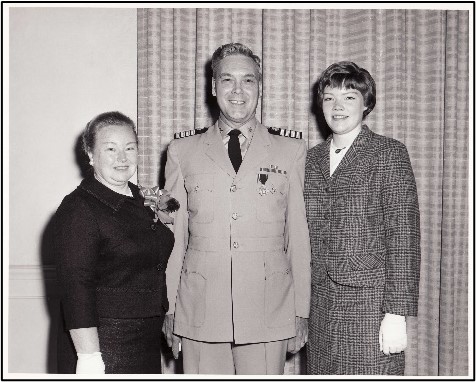 Figure 10. CAPT Taylor standing with his family at an award ceremony in 1965.
Figure 10. CAPT Taylor standing with his family at an award ceremony in 1965.
CAPT Darold W. Taylor was designated the first Public Health Service Liaison Officer for Sanitarian Category. CAPT Taylor received his Master of Public Health (MPH) degree from University of Michigan. He started his commission in 1944 during World War II and was assigned to the United Nations Relief and Recovery Agency in North Africa and Greece. Upon returning to the US, CAPT Taylor was appointed Chief of the Milk Sanitation Office in Washington, DC, working with interstate shippers. His professional contributions include a fellowship of the American Public Health Association and founder of the American Intersociety Academy for the Certification of Sanitarians. CAPT Taylor retired in 1972 and passed away in 1999.
RADM John G. Todd
Appointed CPO from 1974 to 1986
USPHS Commissioned Corps Service: 1957 to 1986

Figure 11. RADM Todd
RADM John G. Todd, DrPH was appointed the 2nd Liaison Officer for the Sanitarian Category. This title was changed to the Chief Sanitarian Officer of the USPHS Commissioned Corps. RADM Todd earned his MPH in University of North Carolina after working as a sanitarian in rural Ohio. He commissioned in 1957 and served in the IHS in Arizona and Oklahoma. In 1970, RADM Todd was appointed as Director, Division of Program Operations, for IHS. In 1977, he was promoted to Assistant Surgeon General, the first EHO to achieve this rank. Active in several professional organizations, he received the Walter Mangold Award from the National Environmental Health Association (NEHA) and the Walter F Snyder Award from the National Sanitation Foundation (NSF). RADM Todd retired from the USPHS Commissioned Corps in 1986.
CAPT Geswaldo A. (Joe) Verrone
Appointed CPO from 1986 to 1989
USPHS Commissioned Corps Service: 1962 to 1989
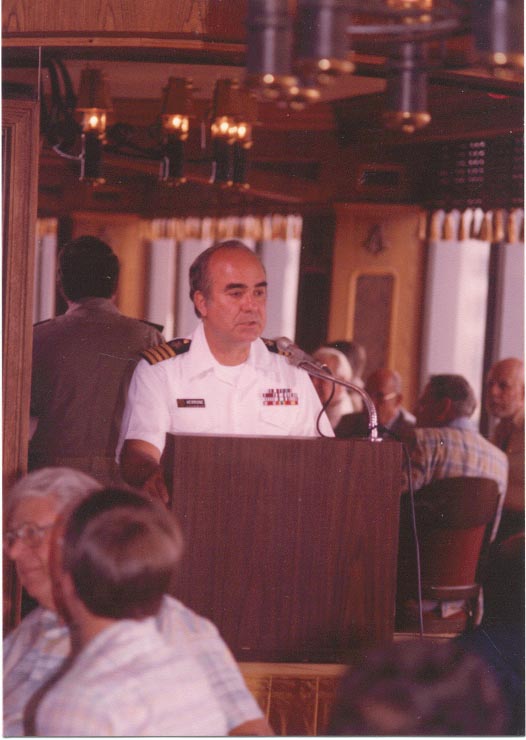 Figure 12. CAPT Verrone making a presentation, 1988.
Figure 12. CAPT Verrone making a presentation, 1988.
CAPT Geswaldo A. Verrone, Dr. P.H. was appointed the 3rd Chief Sanitarian Officer of the U.S. Public Health Service. He received his Doctorate in Public Health (DrPH) from Tulane University. He began his career as a Sanitarian working for the US Army, a county in Maryland, and the US Agency for International Development (USAID). He began his USPHS commission in 1962 and spent his career serving IHS. CAPT Verrone is known for his efforts to increase the number of professional sanitarians, aids, and technicians in the IHS, providing an avenue for employment and placement of sanitarians. He also developed liaison with other federal and international health agencies and served as immediate advisor to the IHS Director. Among his awards, he received the American Academy of Sanitarians (AAS) Davis Calvin Wagner award and the NEHA Walter S Mangold award in 1986. CAPT Verrone retired in 1989.
CAPT Bruce R. Chelikowsky
Appointed CPO from 1989 to 1994
USPHS Commissioned Corps Service: 1972 to 2007
 Figure 13. CAPT Chelikowsky (right) receives an award plaque from CAPT Touch (left), 1990.
Figure 13. CAPT Chelikowsky (right) receives an award plaque from CAPT Touch (left), 1990.
CAPT Bruce R. Chelikowsky, RS, MPH, was appointed the 4th Chief Sanitarian Officer of the U.S. Public Health Service. CAPT Chelikowsky received his MPH from Tulane University and, after serving as a Peace Corps Volunteer in Malaysia, started his Commissioned Corps career in 1972 with IHS. He started as a Service Unity Sanitarian in New Mexico, then led the Sanitation Facilities Operation and Maintenance Program for Portland Area IHS, and advanced to Chief of Environmental Management for IHS Headquarters. His dedication earned him many awards, including the Surgeon General’s Exemplary Service Medal, the Calvin Wagner Award, and the Walter S. Mangold Award. He was active in several professional organizations, including COA, National Environmental Health Association (NEHA), National Sanitation Foundation (NSF) and American Academy of Sanitarians. CAPT Chelikowsky retired in 2007 and passed away in 2020.
CAPT Ralph J. Touch
Appointed CPO from 1994 to 1998
USPHS Commissioned Corps Service: 1980 to 2000
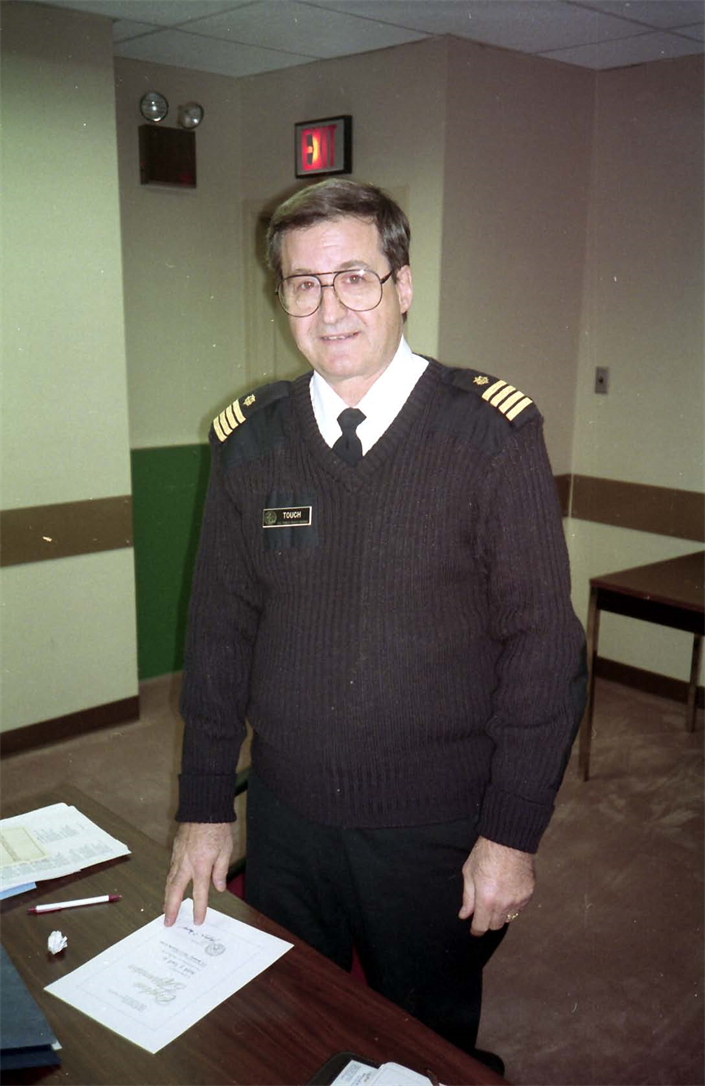 Figure 14. CAPT Touch at a PAC meeting in 1990.
Figure 14. CAPT Touch at a PAC meeting in 1990.
CAPT Ralph J. Touch, RS, PhD was appointed the 5th Chief Sanitarian Officer of the USPHS Commissioned Corps. CAPT Touch earned his PhD from California Coast University. After working as a sanitarian and engineer in the private sector for 16 years, he started his Commission in 1978 with the National Institutes of Occupational Safety and Health (NIOSH) in West Virginia. He progressed to Chief of Testing and Certification before transferring to Atlanta, where he served as NIOSH Assistant to Deputy Director. In 1985, CAPT Touch moved to another branch of CDC, the ATSDR, where he remained for 15 years, eventually serving as the agency’s Assistant Director for Planning and Special Programs. In additions to his technical contributions in toxicology, he spearheaded outreach efforts to historically black and tribal institutions to increase representation in the agency. His notable deployments include coordinating Sanitarian responses during dysentery outbreaks in Rwanda and general oversite of food safety at the 1996 Olympic games. CAPT Touch retired in 2000.
CAPT Thomas E. Crow
Appointed CPO from 1999 to 2001
USPHS Commissioned Corps Service: 1977 to 2001
 Figure 15. CAPT Crow
Figure 15. CAPT Crow
CAPT Thomas E. Crow, RS, MS was appointed the 6th Chief Sanitarian Officer of the USPHS Commissioned Corps. CAPT Crow graduated with a Master of Science in Environmental Health (MSEH) from East Tennessee State University after serving in the Army as a Field Medical Platoon Leader. He commissioned in 1977 and began his USPHS Commissioned Corps career with the IHS in Arizona and Montana. He served as the IHS Branch Chief for Environmental Health Services from 1991 to 2001. CAPT Crow served two terms as Chair of the Sanitarian Professional Advisory Committee (SPAC), strengthening appointment standards, and instituting the Eason, Moran, and Todd awards. He oversaw the category’s name change to “Environmental Health Officers,” becoming the first Chief Environmental Health Officer. CAPT Crow retired in 2001.
CAPT Randy E. Grinnell
Appointed CPO from 2001 to 2005
USPHS Commissioned Corps Service: 1976 to 2006
 Figure 16. CAPT Grinnell
Figure 16. CAPT Grinnell
CAPT Randy E. Grinnell, RS, MS was appointed the 7th Chief Environmental Health Officer of the USPHS Commissioned Corps. CAPT Grinnell, a member of the Sac and Fox Nation of Missouri, received an MPH from University of Oklahoma Health Sciences Center. He began his USPHS Commissioned Corps career with IHS in 1976, serving in Alaska, New Mexico and Oklahoma. From 1988 to 2006, he served in leadership positions with Oklahoma City Area IHS, including Area Director. Among his notable deployments, he served as Deputy Commander of HHS’s Emergency Response Team to Louisiana following Hurricanes Katrina and Rita. CAPT Grinnell retired from active duty in 2006.
CAPT Craig A. Shepherd
Appointed CPO from 2005 to 2009
USPHS Commissioned Corps Service: 1979 to 2009
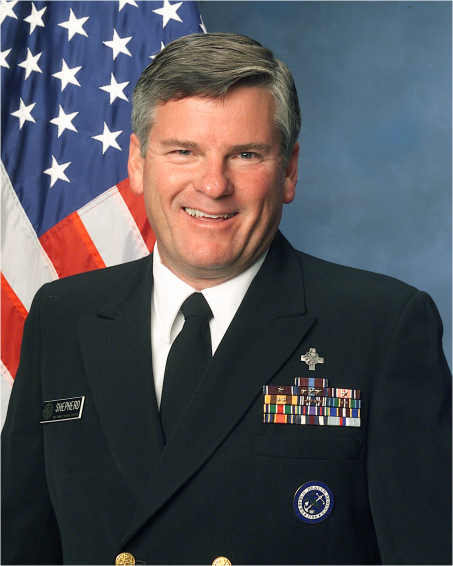 Figure 17. CAPT Shepherd
Figure 17. CAPT Shepherd
CAPT Craig A. Shepherd, RS, MPH, DAAS was appointed the 8th Chief Environmental Health Officer of the USPHS Commissioned Corps. CAPT Shepherd received his commission in 1979 and was assigned as staff sanitarian to the Alcohol, Drug Abuse, and Mental Health Administration’s Saint Elizabeth Hospital in Washington, DC. He then served as a Consumer Safety Officer with the FDA in Virginia, followed by various sanitarian roles with IHS in Maryland, Alabama, and Tennessee. CAPT Shepherd finished his career as senior EHO in the CDC’s Environmental Health Services Branch. In 2007, he deployed as Officer-in-Charge on the US Naval Ship Comfort, providing clinical and public health services in Central America. CAPT retired from active duty in 2009.
CAPT Michael M. Welch
Appointed CPO from 2009 to 2013
USPHS Commissioned Corps Service: 1990 to 2020
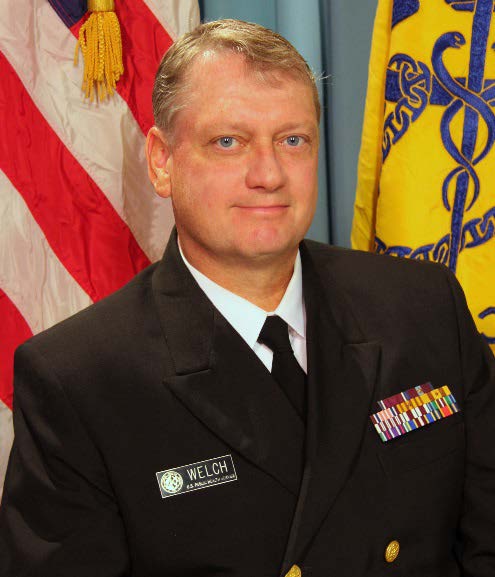 Figure 18. CAPT Welch
Figure 18. CAPT Welch
CAPT Michael M. Welch, REHS, MS, DAAS was appointed the 9th Chief Environmental Health Officer of the USPHS Commissioned Corps. After managing Environmental Health for a 12-county district in Tennessee, CAPT Welch commissioned as an EHO in 1990 with IHS, serving remote villages in Alaska. He transferred to Phoenix Area in 1994, first serving as District EHO and then as Division Director for Environmental Health Services. In 2007, he became the Associate Director for Phoenix Area’s Office of Environmental Health and Engineering. On deployment, he notably served as Environmental Health Officer Team Leader for Hurricane Katrina. As Chief EHO, he emphasized public service over self service for EHOs and the entire USPHS Commissioned Corps. CAPT Welch retired from active duty in 2020.
CAPT Alan Parham
Appointed CPO from 2013 to 2017
Commissioned Corps Service: 1990 to 2021
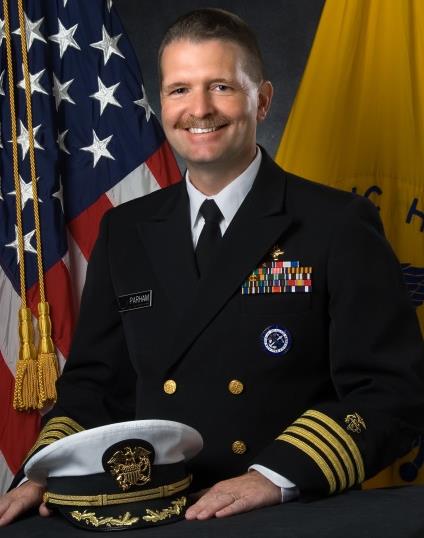 Figure 19. CAPT Parham
Figure 19. CAPT Parham
CAPT Alan Parham, RS, MPH was appointed the 10th Chief Environmental Health Officer of the USPHS Commissioned Corps. CAPT Parham began his active-duty career as an intern in 1990, assigned to IHS in New Mexico. He transferred to ATSDR in 1991 and was selected for the long-term training program in 1995, earning his MPH from University of North Carolina-Chapel Hill. After working in hazardous waste and spill response for CDC Office of Health and Safety, he moved to Alaska in 2000, where he oversaw Safety and Environmental Health for the Coast Guard’s District 17. CAPT Parham returned to ATSDR in 2002 and progressed up to the Acting Director of the Division of Community Health Investigations. As Chief EHO, he championed his passion for awards recognition. A leader in Applied Public Health Team response, his notable deployments included September 11, 2001, in New York and Hurricane Isabel in North Carolina. CAPT Parham retired from active duty in 2021.
RDML Kelly Taylor
Appointed CPO from 2017 to 2021
Commissioned Corps Service: 1990 to 2021
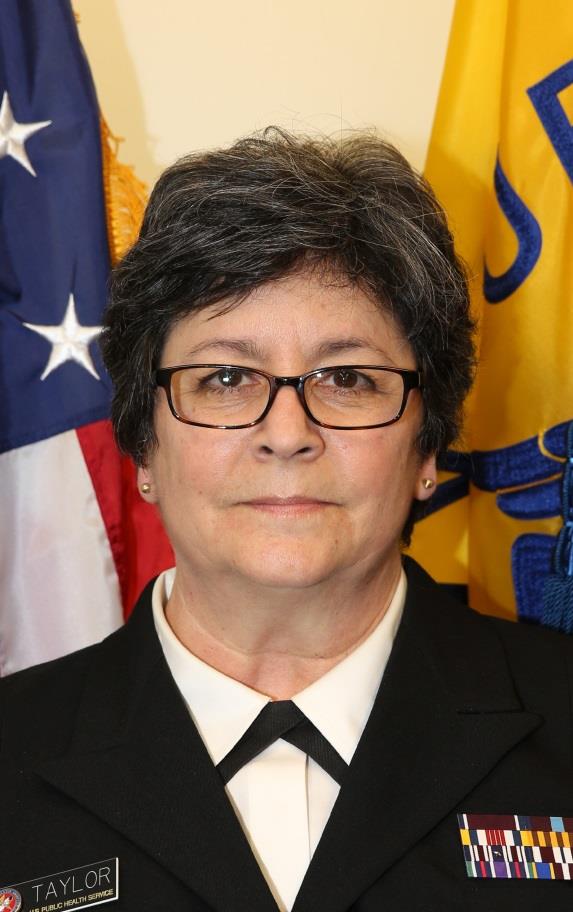 Figure 20. RMDL Taylor
Figure 20. RMDL Taylor
RDML Kelly Taylor, REHS, MPH was appointed the 11th Chief Environmental Health Officer of the USPHS Commissioned Corps. RDML Taylor received her MSEH degree from Colorado State University. She began her USPHS Commissioned Corps career as a Service Unit Sanitarian for IHS in 1990 in South Dakota. She continued serving IHS as an Environmental Health Specialist for the Albuquerque Area Office, where she eventually took over as Director of the Division of Environmental Health Services. RDML Taylor then transferred to IHS Headquarters where she served first as National Injury Prevention Program Manager, then as Director of the Division of Environmental Health Services for all IHS. Demonstrating her leadership capabilities, she simultaneously served as Chief EHO and as Acting Chief of Staff for IHS. RDML Taylor retired in 2021.
CAPT Timothy Jiggens
Appointed CPO from 2021 to Present
Commissioned Corps Service: 1998 to Present
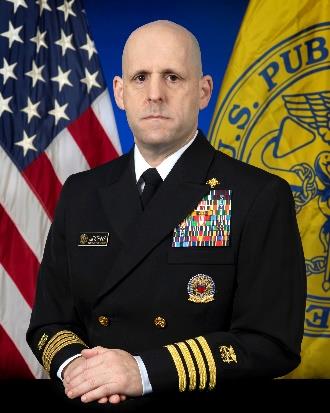 Figure 21. CAPT Jiggens
Figure 21. CAPT Jiggens
CAPT Timothy Jiggens, CIH, REHS, MSPH was appointed the 12th Chief Environmental Health Officer of the USPHS Commissioned Corps. CAPT Jiggens received his Master of Science in Public Health from the University of Alabama-Birmingham. He was called to active duty in 1998, assigned to NIOSH in Ohio. His varied career took him through positions in chemical warfare public health oversight for CDC, safety, and environmental health for Coast Guard, recruiting and training for USPHS Inactive Reserve Corps, and Senior Program Management at Federal Occupational Health. CAPT Jiggens then transferred to FDA where he stood up an Enterprise Risk Management Program, while serving as USPHS Liaison for the agency’s 75 USPHS Commissioned Corps Officers. He has completed several overseas and high visibility deployments, earning him EHO Responder of the Year in 2015. In addition to currently serving as Chief EHO, CAPT Jiggens is assigned to the FDA’s Office of Laboratory Safety, protecting health and safety for 18,000+ employees.
Historical Officer Spotlight-- CAPT John Eason
The EHO Category is spotlighting one of our greatest officers. Please click here to learn more about CAPT Eason and his great career.
References:
Freedman, Ben. “The History of the Sanitarian.” The Sanitarian. (1954).
Horwood, Murray P. “Sixty Years of Progress in Sanitation, 1890-1950.” Modern Sanitation. (1951).
Michael, Jerrold “The Proud History of the Public Health Service Commissioned Corps: Presentation to the Anchor and Caduceus Celebration for the COA Atlanta Branch.” (2008).
Shepherd, Craig. “Sanitarians and Environmental Health Officers.” COA Frontline. (2007).
Snyder, Lynne P. “Passage and Significance of the 1944 Public Health Service Act.” Public Health Reports: 109(6) (1994): 721–724.
Touch, Ralph. “Letter from Current and Past CPOs to Commemorate the 50th Anniversary of Sanitarians in the Commissioned Corps.” (1995).
“USPHS Residency Reviewed by NAS”. Journal of Environmental Health, 31(3) (1968): p 219
Wagner, CJ. “Toward the fullest Utilization of our Health resources.” 30th Annual educational Conference, National Association of Sanitarians, Chicago, IL, June 13. (1966).
“White House Fact Sheet: Progress in Our Ebola Response at Home and Abroad.” (2015).
Woolley, John T. and Peters, Gerhard. “The American Presidency Project.” Santa Barbara, CA: hosted by University of California (database).